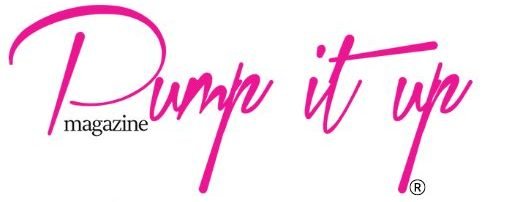
The music industry continued to adapt to the digital world in 2016. And there’s much more chaos and innovation to come.
Last year was another eventful one in the history of music. And that was no surprise.
In 2016, the music industry saw its first signs of true growth since the internet started ravaging it a decade and a half ago. By mid-year, labels saw revenue grow 8.1% over the same period in 2015, fueled mostly by an explosion in subscribers flocking to services like Spotify (40 million subscribers) and Apple Music (20 million). Indeed, in early 2016, we learned that streaming had officially become the industry’s biggest source of income in 2015. While revenue from downloads and physical album sales both continued their years-long decline (by 14% and 17%, respectively), streaming revenue grew 57% during the first half of 2016, and since then, all signs have pointed to continued growth. This is good news for record execs, but what it means for artists and streaming platforms—which each have their own contractual relationships with labels—remains to be seen. As the pie grows, expect to see intensified battles over how it all gets divvied up.
There were also big changes within the streaming landscape itself. Amazonand SoundCloud launched Spotify competitors. Apple polished up its existing service with a new interface. Pandora also unveiled its premium subscription service, expected to launch in the first quarter of 2017. For those keeping count at home, that’s three new subscription services in one year, on top of the three that launched the year before (Tidal, Apple Music, and YouTube Red). Despite all the new competition, Spotify has held onto its dominant role, growing its listenership and flexing its playlisting muscle with more in-house curation and data-powered personalized playlists like Discover Weekly, Release Radar, and Your Daily Mix.
Despite all the upward-sloping numbers, the music industry still found reason to gripe. Its chief target this year was YouTube, which, along with Spotify’s free tier, creates what the RIAA calls a “value gap” for the industry. Simply put, ad-supported services just don’t make as much money as music subscriptions. Indeed, vinyl sales—a relatively tiny sliver of the industry’s income—generated more money than ad-supported streaming like YouTube, SoundCloud, and Spotify’s free tier.
There was tension elsewhere as well. Frank Ocean pulled a fast one on his label Def Jam by releasing his short visual album Endless on Apple Music to fulfill his contract before self-releasing the blockbuster Blond and denying Def Jam a cut of the profits. The maneuver made record executives rethink the already-controversial practice of releasing albums by major artists exclusively on one platform, which may help drive subscription numbers, but frustrates fans and encourages piracy. Up until that point, big-name exclusives practically defined the year in popular music: Kanye West, Drake, Beyoncé, and Chance the Rapper all put out albums initially available only via either Apple Music or Tidal. (Spotify refuses to play this game.) Meanwhile, the concept of the album itself became ever more fuzzy, thanks to visual albums (i.e., music released as a long-form video or film) from Ocean and Beyoncé, plus Kanye West’s post-release editing of Life of Pablo.
With so much change in the last few years, what could 2017 possibly hold? Plenty. Here are our predictions.
THE MUSIC SUBSCRIPTION BOOM WILL CONTINUE
The number of people willing to pay $10 a month for music skyrocketed in 2016, but it’s still pretty small. All told, about 100 million people are believed to subscribe to music services. (This doesn’t include free streaming from SoundCloud, YouTube, or Spotify’s free tier.) But considering that there are 319 million people in the United States alone, there’s plenty of room for growth. Just look at Apple Music. The service, which is available in 113 countries and comes pre-installed on every iOS device, only took a year and a half to reach half of Spotify’s size in terms of paying subscribers. And they both keep expanding. Now we have Amazon Music Unlimited, which is well positioned to reel in new subscribers at $8 per month for Prime members. When Pandora finally launches its subscription service, it will have 78 million listeners to potentially convert into paying subscribers—not to mention a newfound possibility of expansion beyond the U.S., New Zealand, and Australia (although those plans are still being hammered out).
Streaming music is also breaking free from the confines of our smartphones and laptops. Thanks to the rise of smart speakers like Amazon Echo, Sonos, and Google Home, more listening is happening at home, making the prospect of treating music like a monthly utility an even more sensible one. Cheaper family subscription plans don’t hurt, either.
AT LEAST ONE MUSIC SERVICE WILL DISAPPEAR
We’ve seen five new music subscription services arrive in the last two years (and one more coming from Pandora early next year), but that doesn’t mean music streaming has become a lucrative successful business. Quite the opposite: None of these services has made an enduring profit, although Spotify is working aggressively toward that goal as it gets ready to go public next year. Big tech companies like Apple, Google, and Amazon can afford to run their music services at a loss indefinitely. This landscape makes it tricky for smaller players like Tidal, SoundCloud, Deezer, and Napster (formerly Rhapsody). Both Tidal and SoundCloud were the subject of acquisition rumorsin 2016, and rumors continue to swirl around the prospect of Pandora selling itself off. Bandcamp would make a very attractive acquisition for Pandora or Spotify, but the artist-centric music and merch marketplace is well positioned to stay independent if it prefers: The company has been profitable since 2012 and its cultural influence is only growing.
The bottom line: Expect to see fewer music services this time next year. At least one of these companies is bound to get acquired or go under altogether.
STREAMING EEXCLUSIVES WON’T DIE
Frank Ocean may have put a damper on the industry’s enthusiasm about platform-exclusive album releases, but don’t expect to see the trend die off just yet. Universal (owner of Def Jam) may have sworn them off, but the other major labels have remained silent on the issue. Besides, in an age when many artists have an unprecedented capacity to chart their own course, does it really matter what the labels think?
Apple and Tidal are apparently willing to shell out a ton of money for these exclusive deals. And as long as they remain an effective tool for driving subscriptions amid intensifying competition, the streaming platforms aren’t likely to stop offering them. Despite some controversy, the exclusivity approach seems to work for most artists: Drake was the most-streamed artist on Spotify this year, despite Views only being available on Apple Music when it debuted. Like Beyoncé’s Lemonade and Ocean’s Blond, Drake’s latest album was a massive success overall.
That said, we should expect to see fewer of these deals next year. Streaming platforms, labels, and artists will use the tactic much more selectively to minimize fallout while still extracting whatever competitive value they can.
MUSICIANS WILL SQUIRM AS AI GETS BETTER AT MAKING MUSIC
Have you ever seen a computer write a song? It’s nuts. Give IBM’s Watson a simple melody and define a mood, and the multi-talented artificial intelligence platform will churn out an original song that sounds like it was made by a person—albeit not an especially talented one. But it’s now possible to teach machines enough about the rules of music theory to let them compose their own music, complete with multiple instrumental layers and changes in key and tempo. The result isn’t something you’ll want to listen to on your daily commute, but it’s still early in the quest to teach computers how to make art. And it’s not just IBM that’s focused on this. Google’s Magenta project, announced in April 2016, is in the beginning stages of stretching the limits of machine learning to help computers understand—and eventually mimic—creative thinking. Like Watson, Magenta has already produced a rudimentary song of its own.
Machines aren’t about to put artists out of work, but advances in artificial intelligence could make certain types of music easier and cheaper to create—video-game soundtracks or background music for a retail store, for instance—that would not require licensing or paying royalties. AI could also augment the creative process for flesh-and-blood songwriters. An artist stuck on writing the chorus of a song could tap into tools based on Watson or Magenta to auto-generate a few ideas.
Next year, expect the technology to improve slightly and for more artists to catch wind of it. Some will see an exciting new creative opportunity. Others will cringe at the mere idea of it.
NEW ANSWERS (AND DOLLAR SIGNS) FOR ARTISTS
The brief history of streaming’s rise has been accompanied by an often awkward question: How will artists fare? It’s a natural concern given the minuscule per-stream royalty rates offered under a model that’s still scaling to its full potential. There won’t be a silver bullet in 2017, but artists will see more reasons to be hopeful about the future because catering to artists has increasingly become a priority for streaming services.
Apple Music and Tidal have famously made artist-friendliness a key tenet of their offerings—or at least of their marketing. In June 2016, Spotify hired former Lady Gaga manager Troy Carter to oversee its expanding artist relations initiatives. Middle-class artists might not be getting huge checks from Spotify, but many are finding new promotional value in landing on the service’s most popular playlists, whether they be hand-curated in-house or data-powered. Discover Weekly alone drove more than half of all listening for 8,000 artists in less than a year. Spotify is also building out more tools and services for artists and finding ways to tap into the passion—and disposable income—of super-fans. Meanwhile, Pandora is busy reshaping itself into a service that caters more directly to artists’ needs, be it with data, marketing tools for artists, or the ability to sell concert tickets directly to fans from within the app.
For now, record labels still reap the lion’s share of revenue, but that balance of power is poised to shift. Between the platforms’ investment in artist relations and the growing slice of revenue being generated by streaming, musicians are bound to see new benefits. And streaming services, labels, and artists will all have to renegotiate their relationships with one another. Artists may soon be in a better position to demand more from their labels or, following Frank Ocean’s lead, sidestep the middlemen altogether—a prospect that could become easier for less-than-household names as the streaming industry’s artist-facing services mature.
We’re also seeing promising signs outside of the all-you-can-stream model. In 2015, Bandcamp announced that it had paid out $100 million to artists since being founded in 2008. As 2016 winds down, that number is already up to $190 million, a number that suggests Bandcamp is booming. That’s not just good news for Bandcamp and the artists who use it to sell music and merchandise. It’s also a clear sign that music fans are perfectly happy to pay for music and support artists directly in the digital age.
AMAZON WILL BECOME A MAJOR PLAYER IN MUSIC
In 2016, the streaming battle was primarily framed as a competitive struggle between Apple and Spotify. That will continue in 2017, but while latecomers to the subscription game like Pandora and SoundCloud fight to amass bigger numbers, one company will have a relatively easy time: Amazon. Like Apple, Amazon has the advantage of being a giant tech company with a massive customer base to which it can market its music service. Its wildly successful Echo smart speaker is also a natural vehicle for a full-fledged music subscription service, and Alexa offers more voice control functionality to Amazon Music Unlimited subscribers than it does to users of other services like Spotify and Pandora.
It’s also a cheaper option for many people: If you subscribe to Amazon Prime, Amazon’s music service is $8 per month. If you own an Echo or Echo Dot, you can get the service for $4 per month (although it will only work on that device). No other major subscription service has been able to dip below the standard $10 monthly price tag, making Amazon’s lower cost a unique competitive advantage.
While it’s no Spotify, Amazon Music Unlimited launched as a perfectly decent, cross-platform music service. And the company is already starting to improve the service with more hand-curated playlists and exclusive content deals like the one it recently signed with Garth Brooks. Like Apple and Google, Amazon can afford to invest in this area without much concern for profitability. Expect Amazon to nab quite a few subscribers pretty quickly.
NEXT WAVE OF INNOVATION: VIRTUAL REALITY
Music execs might have been caught off guard by file-sharing and other technological innovations, but the resulting wounds have taught the industry a valuable defensive tactic: Sleep—to paraphrase Napster’s one-time archnemesis Metallica—with one eye open, lest it get blindsided by change yet again.
If virtual reality is going to be as explosive as the experts predict (ballooning to nearly $30 billion in revenue by 2020), the music industry will be ready. Big names like Paul McCartney, U2, Björk, Coldplay, and Deadmau5 are just a few of the artists who have already embraced VR in the form of immersive music videos or live concerts that invite fans onstage. But since consumers are just starting to get acquainted with VR, the music industry has pumped the breaks as it waits for the market for hardware and software (and thus demand for immersive content) to catch up with its ambitions. It’s pretty unusual for the music industry to be ahead of the next wave of innovation, but that’s what’s happening with VR.
There are already signs that VR will yield exciting developments for fans and the music industry. Immersive live streams of concerts, for instance, could evolve into a real source of revenue beyond the standard catalogs of recorded music. Music videos, music documentaries, and music-oriented video games can also take on new life in a world where virtual reality headsets are common. There are also interactive music visualizers, which turn songs—or even your own voice—into responsive animations that unfold in front of you. Then there’s the audio itself. For the best experience, immersive music environments will require engineers to mix songs in more spatially complex manners than standard stereo or even surround sound, which could pave the way for innovations in the way music is composed and produced.
There could also be money in VR. It’s still early enough that artists and labels can start crafting business models around a simple but familiar logic: Give fans something meaningful and entertaining that they can’t get anywhere else (or easily pirate) and they just might give you their money. Sounds crazy, I know.


